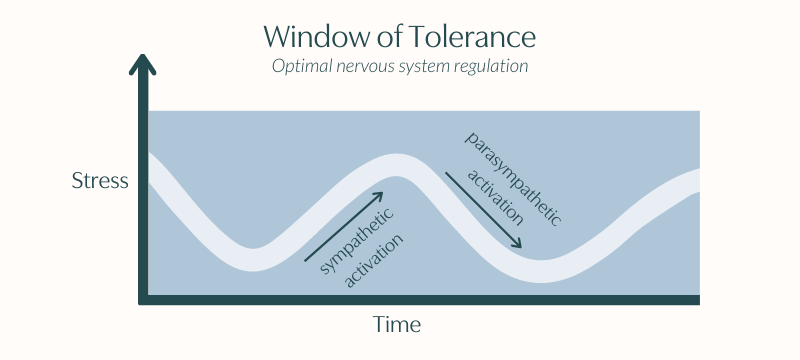How To Actually Calm Down (Part 1) - The Biology of Stress

We are living through a global stress epidemic.

Why are we all so stressed?
From income inequality to systemic disadvantage. From natural disasters and a climate crisis; to the ongoing effects of a global pandemic. How could we not be anxious?!
In this environment, learning to calm down can feel beyond our reach. And yet overcoming stress, anxiety, and overwhelm has never been more crucial.
To weather the storm of an uncertain world, we need resilience. And the bedrock of resilience? Is learning to become calm.
So we decided to dive into what it takes to actually calm down.
Your Ultimate Guide to Overcome Stress, Anxiety & Overwhelm
In this 3-part series you’ll discover:
- the biology of stress
- why becoming calm is so important
- how you can relieve anxiety, stress and overwhelm with ease
You may want to bookmark these posts so you can return to them again and again.
We’ll cover as much ground as possible. But remember our posts can’t substitute professional help or medical advice.
If you need extra support to heal from anxiety, trauma, grief or illness we recommend finding a trauma-informed therapist. They’ll be able to create a safe space for you and address your personal, particular situation.
Let’s dive in.
Why is becoming calm so difficult?

In a word? Dysregulation.
This one word will help you understand so much about your body and mind. With this one word, you will realise that you are not wrong or broken.
You are not an anxious wreck. You are not lazy. Your feelings of overwhelm are not your fault. And understanding dysregulation will help you learn how to calm down.
So what is dysregulation and why does it matter?
Dysregulation is the “chronic activation of the stress response system”.
Let’s break that down.
The biology of stress & anxiety
Your body and brain contain a glorious network of electricity.
Your nervous system. And your nervous system is what responds to stress.
From your spinal cord to your brain, and with nerves branching out into every part of your body. This network translates sensory input, stress and emotions into energy.
Your nervous system has two components. The
- sympathetic nervous system, and
- parasympathetic nervous system.
As Harvard Medical School puts it:
“The sympathetic nervous system functions like a gas pedal in a car. It provides the body with a burst of energy so that it can respond to perceived dangers. The parasympathetic nervous system acts like a brake. It calms the body down after the danger has passed.”

A healthy nervous system manages or ‘regulates’ this energy well. It balances incoming stimulation with an appropriate release of energy.
If you perceive a threat, your body gives you a burst of stress hormones. Adrenaline and cortisol help you survive.
Once the danger has passed, your body releases soothing hormones. Oxytocin and acetylcholine help to calm you down.
Therefore, a regulated nervous system can easily shift from stress to calm.
Which means a dysregulated nervous system is one that has been inundated by stress and trauma. It gets ‘stuck’ in hypervigilance, anxiety, and overwhelm.
Over time, chronic dysregulation leads to burnout and exhaustion.
So why is dysregulation so important to understand?
Because your stress responses are biological responses. They are instinctive. They are evolutionary adaptive survival mechanisms.
And this is why your anxiety and overwhelm are not your fault. Your body is responding exactly the way it should in the face of stress.
The key to overcoming anxiety
Your capacity to manage stress is called a ‘window of tolerance’. This window is your optimal state of nervous system regulation.
Within this window you feel relaxed yet alert, engaged and secure.
There may be events throughout the day that take you to your edge of tolerance. But by using different strategies, you’ll be able to soothe your nervous system and stay within your window.
You naturally respond to the ebb and flow of life.

But when stress pushes you beyond your window of tolerance, you become dysregulated.
These dysregulated responses to stress are sometimes called the 4 F’s of Fear
- Fight - become combative, hostile or argumentative
- Flight - run, escape, avoid, or withdraw
- Fawn - become friendly, cooperative or submissive
- Freeze - disassociate, numb or shut down
These responses are ways you adapted to survive threats and danger. Which means dysregulation is different for everyone. It could look like
- a racing heart
- bursting into tears
- a panic attack
- aggression
- or even becoming overly friendly (especially during conflict)
If dysregulation keeps rising, your nervous system could “flood” and you may feel:
- numb
- overwhelmed
- withdrawn, or
- dissociated

Your capacity to manage stress may be higher or lower than someone else. What one person finds mildly annoying may be completely overwhelming to others.
Everyone’s window of tolerance is different.
This is because regulation of the nervous system is varied. Regulation isn’t an on/off switch. It’s more like a continuum from highly dysregulated to highly regulated.
Also, it’s difficult to pinpoint when someone will move from regulated to dysregulated.
You could have a busy day at work, followed by a traffic jam on the way home, be rushing to get dinner on the table, and still feel regulated.
Or a similar situation may entirely overwhelm you. Especially if you’re a Highly Sensitive Person (HSP) or neurodivergent.
Highly sensitive & neurodivergent people often process information more deeply. So you may be more susceptible to dysregulation and sensory overwhelm.
That’s ok. We’re all unique and the way you process stress is totally individual.
Terms to Remember
- Sympathetic Nervous System: the stress response arm of the nervous system
- Parasympathetic Nervous System: the calming response arm
- Regulated: when the nervous system is easily and effectively able to switch from stress to calm
- Dysregulated: when the nervous system is unable to match stimulus with an appropriate response
- Window of tolerance: your optimal state of nervous system regulation where you feel balanced and secure
Why being calm is a skill you can learn
If dysregulation causes chronic stress, anxiety and overwhelm? It means that regulation is the key to wellbeing.
To overcome anxiety, you need to help your nervous system become more well-regulated.
In Part 2 of how to actually calm down, discover:
- why calm is a learned skill
- how trauma relates to anxiety, and
- how to become calmer and more well-regulated
Calm down effortlessly with the Restful app. Download for free on Google Play or the App Store today!